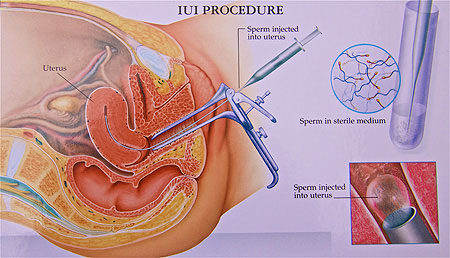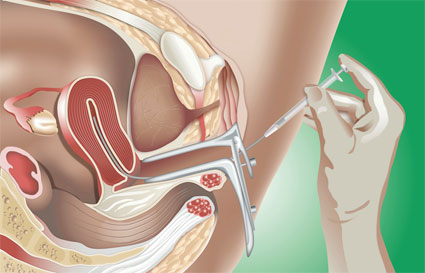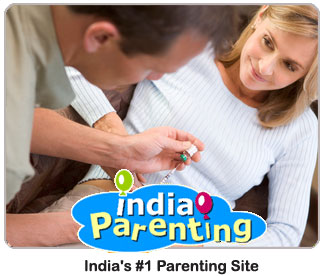Intrauterine insemination or IUI is commonly known as artificial insemination. In this procedure, the sperm is placed into the reproductive tract of the woman. This procedure increases the chances of getting pregnant. The procedure of IUI is comprehensive. Read on to know about the basics of IUI procedure. Intrauterine insemination or IUI is an artificial insemination procedure. This is basically human intrauterine insemination through AIH or artificial insemination by the husband of the woman who is impregnated. The process involves the placing of the sperm within the uterus of the woman in order to maximise her chance of getting pregnant. In this articleHow this Happens?Now, What Happens During the IUI?How is the Sperm Collection Done?The Sperm Needs to be Washed for IUIHow this Happens? In the IUI procedure, timing of the whole action is very important in order to attain positive results. This is basically even more important than the actual intercourse. This is because during the intercourse, the sperm has to travel through the cervical canal of the woman. There are number of glands in the cervix along with the presence of mucous. This actually acts as a reservoir for the sperm and it sustains itself. Then over a period of few days, this sperm is released into the uterus. Now, What Happens During the IUI? During IUI, the sperm is released into the uterus of the woman and it does not remain viable for a few days as it was for the other case. Thereby, it becomes essential that the sperm is inseminated at a time that is nearest to the period of ovulation. There is a certain manner in which this time is determined. This is done with the aid of the ovulation predictor kit. The kit measures the woman’s LH surge. The surge actually attains its peak about twelve to twenty-four hours prior to the release of the egg. A urine test is done on the woman for this purpose. If the result is positive, the IUI procedure is conducted immediately on the following day. The other method that helps in adjusting the desired timing is by triggering the ovulation in an artificial manner. This is done through the administration of the HCG injection. First an ultrasound is conducted in order to determine the development of the eggs in the ovaries of the woman and whether they are mature enough or not. After this time the ovulation occurs within thirty-six hours. Say, if the HCG injection is administered in the evening, the IUI procedure can be conducted after two days exactly. How is the Sperm Collection Done? While doing an IUI, one need not abstain from intercourse and it is also important to note that sperm counts are variable in all men. There also may not be a definite consistency in the sperm numbers in regard to the frequency of ejaculation. The day when the ovulation kit gives a positive result, the couple is suggested to go for an intercourse or it can also be planned on the day that the woman receives the HCG triggering injection. The desirable IUI timing can be attained under these circumstances. Prior to the woman is scheduled for the IUI, the semen sample needs to be collected in a sterile collection cup. Then the sperm is liquefied inside the clinic’s incubator. The Sperm Needs to be Washed for IUI Before placing the sperm into the uterus, it needs to be prepared. The ejaculated fluid actually comprises of the seminal fluid and sperm. The seminal fluid carries different hormones and chemicals. The prostaglandin is one of the chemicals that can potentially cause problems in IUI. The symptoms of IUI are that the woman can suffer from nausea, diarrhea, fever, cramps and vomiting. The separation of the sperm from the seminal fluid is called sperm wash. After the semen is collected and liquefied, it actually becomes thick. It is then mixed with sperm wash media and placed inside an instrument called centrifuge. It is made to spin vigorously and that settles down the sperm at the bottom as a small pellet. The seminal fluid that floats above is discarded. A little more sperm wash media is added to it and mixed thoroughly. This is the final specimen taken for insemination.
Intrauterine insemination or IUI is commonly known as artificial insemination. In this procedure, the sperm is placed into the reproductive tract of the woman. This procedure increases the chances of getting pregnant. The procedure of IUI is comprehensive. Read on to know about the basics of IUI procedure. Intrauterine insemination or IUI is an artificial insemination procedure. This is basically human intrauterine insemination through AIH or
artificial insemination by the husband of the woman who is impregnated. The process involves the placing of the sperm within the uterus of the woman in order to maximise her chance of
getting pregnant. How this Happens?
In the IUI procedure, timing of the whole action is very important in order to attain positive results. This is basically even more important than the actual intercourse. This is because during the intercourse, the sperm has to travel through the cervical canal of the woman. There are number of glands in the cervix along with the presence of mucous. This actually acts as a reservoir for the sperm and it sustains itself. Then over a period of few days, this sperm is released into the uterus.
Now, What Happens During the IUI?
During IUI, the sperm is released into the uterus of the woman and it does not remain viable for a few days as it was for the other case. Thereby, it becomes essential that the sperm is inseminated at a time that is nearest to the period of ovulation.
There is a certain manner in which this time is determined. This is done with the aid of the ovulation predictor kit. The kit measures the woman’s LH surge. The surge actually attains its peak about twelve to twenty-four hours prior to the release of the egg. A urine test is done on the woman for this purpose. If the result is positive, the IUI procedure is conducted immediately on the following day.
The other method that helps in adjusting the desired timing is by triggering the ovulation in an artificial manner. This is done through the administration of the HCG injection. First an ultrasound is conducted in order to determine the development of the eggs in the ovaries of the woman and whether they are mature enough or not. After this time the ovulation occurs within thirty-six hours. Say, if the HCG injection is administered in the evening, the IUI procedure can be conducted after two days exactly.
How is the Sperm Collection Done?
While doing an IUI, one need not abstain from intercourse and it is also important to note that sperm counts are variable in all men. There also may not be a definite consistency in the sperm numbers in regard to the frequency of ejaculation. The day when the ovulation kit gives a positive result, the couple is suggested to go for an intercourse or it can also be planned on the day that the woman receives the HCG triggering injection. The desirable IUI timing can be attained under these circumstances.
Prior to the woman is scheduled for the IUI, the semen sample needs to be collected in a sterile collection cup. Then the sperm is liquefied inside the clinic’s incubator.
The Sperm Needs to be Washed for IUI
Before placing the sperm into the uterus, it needs to be prepared. The ejaculated fluid actually comprises of the seminal fluid and sperm. The seminal fluid carries different hormones and chemicals. The prostaglandin is one of the chemicals that can potentially cause problems in IUI. The symptoms of IUI are that the woman can suffer from nausea, diarrhea, fever, cramps and vomiting.
The separation of the sperm from the seminal fluid is called sperm wash. After the semen is collected and liquefied, it actually becomes thick. It is then mixed with sperm wash media and placed inside an instrument called centrifuge. It is made to spin vigorously and that settles down the sperm at the bottom as a small pellet. The seminal fluid that floats above is discarded. A little more sperm wash media is added to it and mixed thoroughly. This is the final specimen taken for insemination.






























